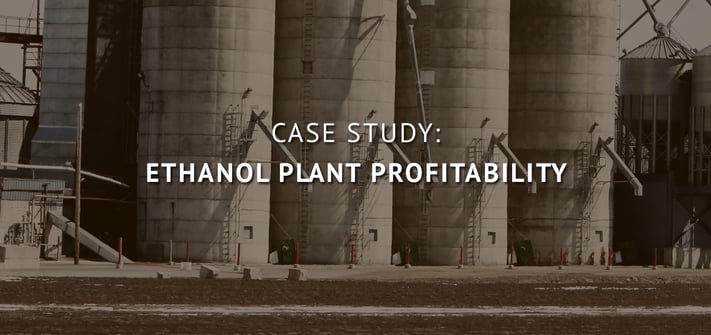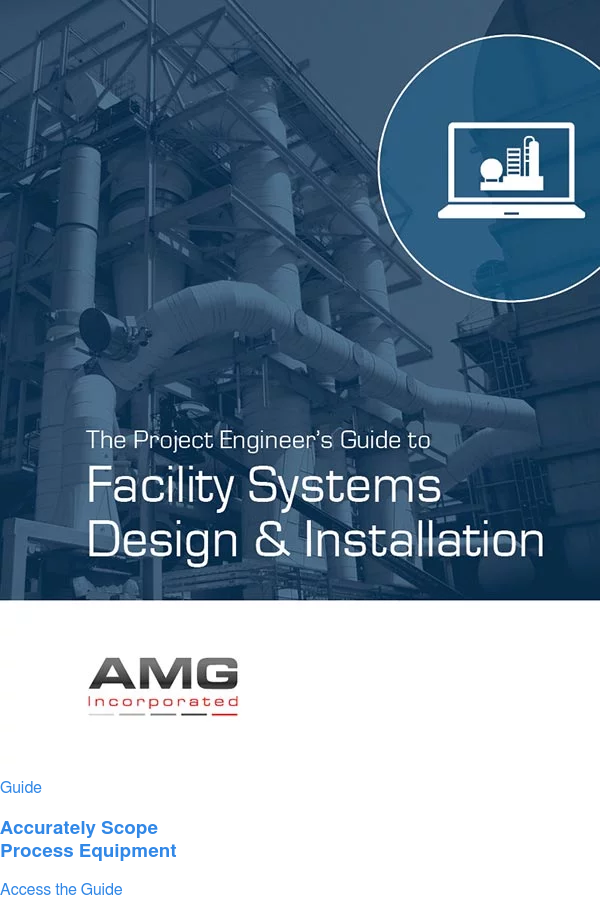Background:
We received a call from a client who wanted to make energy and efficiency improvements to an existing ethanol facility. The existing facility was designed using a technology package that was no longer available. As with all facilities, this plant was built on a budget. In order to save on capital expenses, a minimal energy recovery plan was adopted to reduce equipment in the plant.
The Problem:
As the economics of operating an ethanol facility are in flux with the price of corn, ethanol, and natural gas, it became evident that the plant was going to struggle to maintainin the coming years.
The first challenge for the facility was to lower its total energy costs. This was not as simple as adding more surface area to heat exchangers, as there were several systems that were already interconnected. This meant changing one system would affect other systems as well.
The second challenge was to improve operational reliability. Several of the decisions made to reduce capital had an adverse effect on operations. There was a single mash train that had to be shut down for cleaning, interrupting the fermenter fill sequence and beer feed heat recovery. The evaporator operated on whole stillage, causing increased fouling. The beer column feed heater frequently fouled, and the beer column was pressurized when it should have been operating under vacuum.
The Solution:
Ethanol facilities are a classic example of pinch analysis, and there are several operating facilities using successful pinch models. The challenge for this particular facility was integrating a successful pinch model where the equipment was not originally designed for it. Our initial approach utilized plant operating data to develop a detailed mass and energy balance.
Working with plant personnel, we developed a concept energy recovery model that also addressed many of the fouling and operational issues the plant was having. The mass balance was modified to reflect these changes, determine energy savings, and a return on investment for the project.
Mash Trains Solution
We replaced the single mash train with narrow gap plate heat exchangers with a double mash train. One train operated, while the other train was cleaned, or ready in “stand-by” mode. The new exchangers included a wide-gap plate design with more surface area that accommodated a 100F increase in beer column feed, while reducing tower water usage on fermenter fill. Finally, we added a booster pump to control the system pressure.
Distillation Solution
With the higher temperature beer feed coming out of the mash train, CO2 degassing became more important. We installed a new flash tank, vent cooler, and blower to assist in the degassing process.
The old system did not recover any heat from the beer column bottoms, so we added new heat exchangers to fix this. The new heat exchangers made a significant reduction in steam usage at the beer column, while reducing vapor flashing in the decanter centrifuges.
In order to reduce fouling, we added a recycle pump was added at the beer feed S-T heat exchanger.
Molecular Sieves and Evaporation Solution
The rectifier overhead vapors were split between the molecular sieves and the evaporator, where the ethanol vapor was used as the heat source to drive the evaporator. The evaporator was fed whole stillage instead of thin stillage, which increased fouling, limited the amount of evaporation capacity, and increased the drying load in the DDGS dryer.
The obvious answer was to convert the evaporator feed from whole stillage to thin stillage, but we weren’t sure how it could be done without increasing the total plant steam consumption. On the surface, it seemed counterintuitive to condense the ethanol vapor in the evaporator, and then reheat it on the way to the molecular sieves. This is another area that would not be obvious in a pinch analysis.
With some detailed mathematical modelling around the evaporator, it made sense to convert the evaporator to thin stillage, and condense all the ethanol vapor on the evaporator’s first effect to provide more evaporation. We then installed a stream-driven vaporizer, which “de-coupled” the molecular sieves. This works because the evaporator has three effects, so there is about 2.5 times more evaporation for every pound of ethanol vapor that is condensed.
In order to increase evaporation even more, a thin stillage re-boiler was later added to the system. This increased the syrup solids and decreased the dryer load.
Results:
The end result of these modifications was a 12.5% reduction in steam and a 20% reduction in natural gas usage. The plant was able to increase annual production by reducing downtime for cleaning and running for longer periods at steady-state. This facility is profitable today because of the energy improvements we helped implement.



